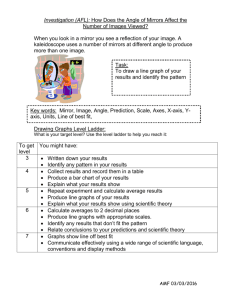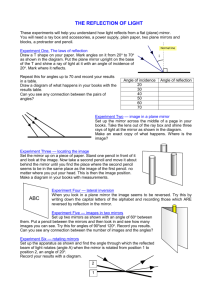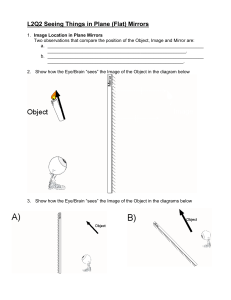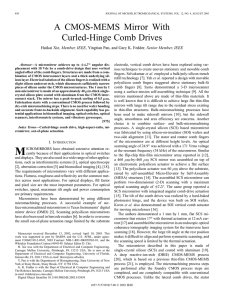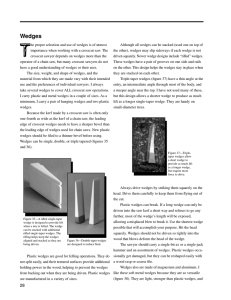Lenses and Mirrors Inquiry Lab
advertisement
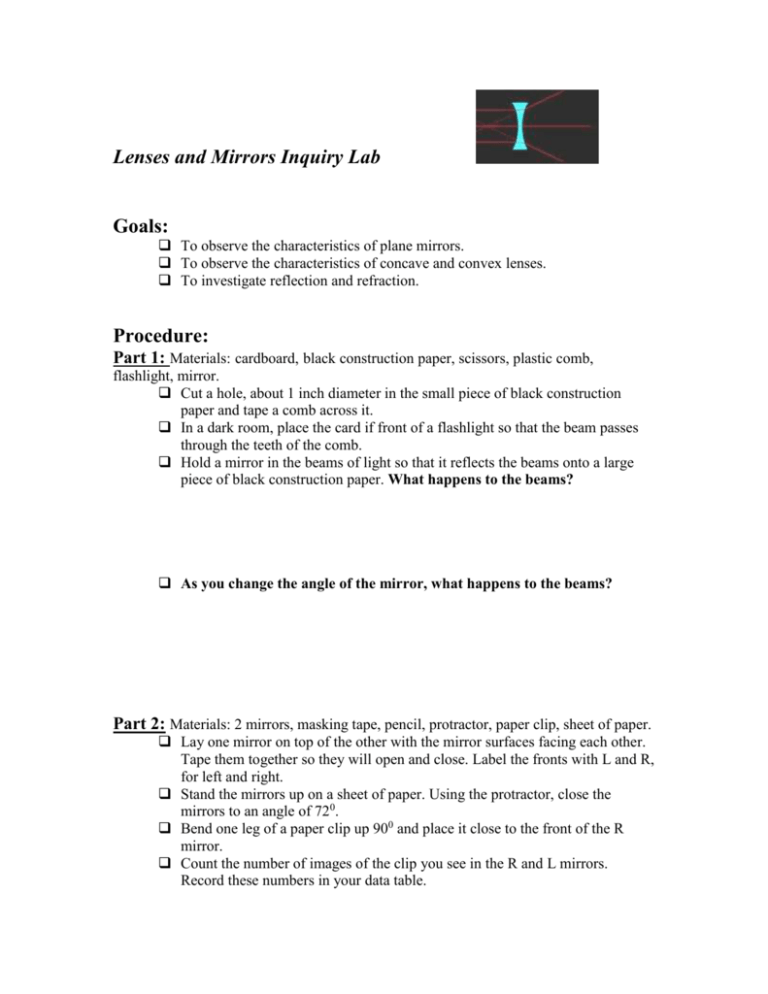
Lenses and Mirrors Inquiry Lab Goals: To observe the characteristics of plane mirrors. To observe the characteristics of concave and convex lenses. To investigate reflection and refraction. Procedure: Part 1: Materials: cardboard, black construction paper, scissors, plastic comb, flashlight, mirror. Cut a hole, about 1 inch diameter in the small piece of black construction paper and tape a comb across it. In a dark room, place the card if front of a flashlight so that the beam passes through the teeth of the comb. Hold a mirror in the beams of light so that it reflects the beams onto a large piece of black construction paper. What happens to the beams? As you change the angle of the mirror, what happens to the beams? Part 2: Materials: 2 mirrors, masking tape, pencil, protractor, paper clip, sheet of paper. Lay one mirror on top of the other with the mirror surfaces facing each other. Tape them together so they will open and close. Label the fronts with L and R, for left and right. Stand the mirrors up on a sheet of paper. Using the protractor, close the mirrors to an angle of 720. Bend one leg of a paper clip up 900 and place it close to the front of the R mirror. Count the number of images of the clip you see in the R and L mirrors. Record these numbers in your data table. The mirrors create an image of a circle divided into wedges. Record the number of wedges. Hold the R mirror still and slowly open the L mirror to 900. record the number of images of the clip and wedges in the circle on the data table. Repeat again with an opening of 1200. Answer the reflection questions. Images and Wedges Seen in the Mirror Angle of mirror R Images L Images Wedges 720 900 1200 Reflection Questions 1. What is the relationship between the number of wedges and the number of paper clip images? 2. What angle do you think would divide a circle into six (6) wedges? Test your hypothesis. Part 3: Materials: cardboard, scissors, comb, magnifying glass, white paper, textbook. Use the same cardboard/comb device as in Part 1. Lay the piece of white paper in front of the beams so that you can see them clearly. You may need to place the paper on top of a textbook(s). Hold a magnifying glass between the comb and the paper so that the light passes through the convex glass. What happens to the rays Now let’s look at how our eyes work!



